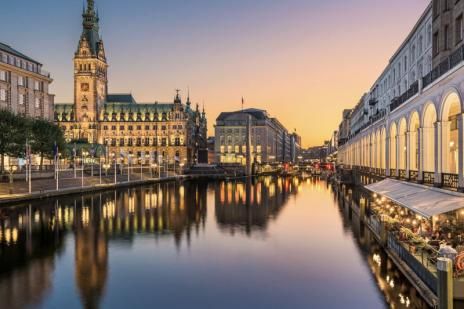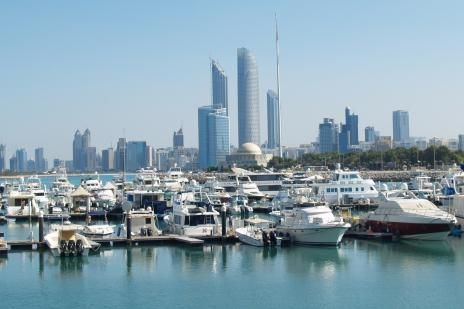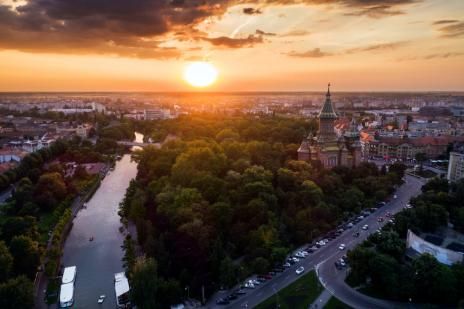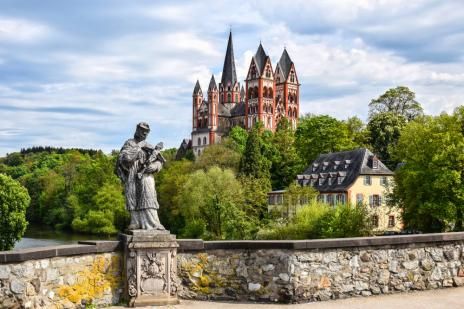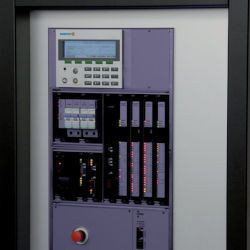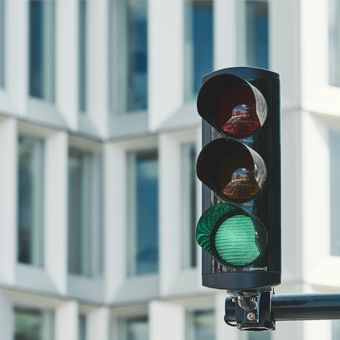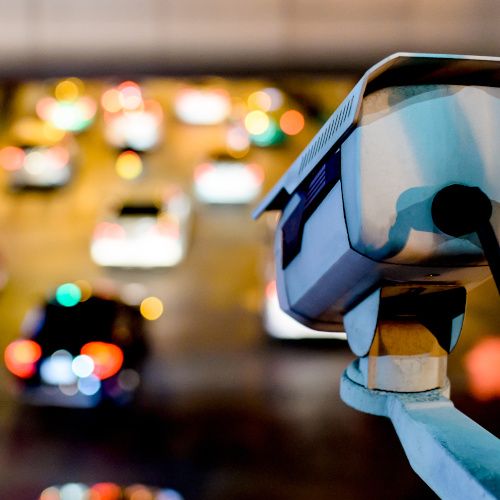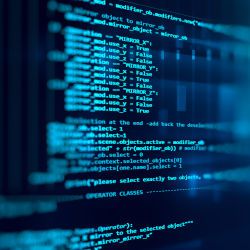Trafikstyring og
trafikovervågning
At overvåge byens trafik er en grundlæggende opgave indenfor trafikafvikling. Informationer om vejnettet kommer fra forskellige sensorer og detektorer, f.eks. loops og trafikkameraer, videokameraer og andre kilder. Bluetooth-baserede systemer og "Floating Car Data" (FCD) er de seneste teknologier, som benyttes indenfor trafikstyring.
SWARCO tilbyder et komplet udvalg af løsninger, software og hardware indenfortrafikstyringog trafikovervågning.

"A modern transport infrastructure includes intelligent transport systems that record and process all relevant traffic information in real time. This data is necessary for proactive traffic control and also serves to network the various modes of transport. Highly congested infrastructures in particular are dependent on data-based traffic control. Intelligent control allows traffic flow to be maintained, congestion to be reduced (or avoided), traffic routes to be rerouted and traffic warnings to be issued in good time."
Michael Schuch, Chief Operating Officer (COO)
Vigtige funktioner indenfor trafikovervågning
Trafikovervågning i realtid
Driftovervågning
Trafikdiagnostik
Indsamling af trafikdata
Videostyring
Logging
Trafikovervågning i realtid
Trafikdetektering som er tilgængelig for styrenheder og detektorstationer, samler og analyserer for at skabe en oversigt i realtid over den aktuelle trafikstatus.
Status fra signalgrupperna hentes i realtid, og presenteres som et tidsbaseret diagram, og gemmes i arkivet.
Driftovervågning
Løsningen kombinerer et stort antal enheder og eksterne systemer. Brugeren kan overvåge alt udstyr, og systemmeddelser om tekniske problemer som kræver handling. De mest basale informationer inkluderer:
- Tidsstempel
- Enhedsidentifikation
- Beskrivelse af enheder eller delsystemer
- Fejlkoder og beskrivelse af fejl
- Status (fejl, udefineret, ok, mm.)
Diagnostik af trafik og udstyr
Diagnostik anvendes til at registrere tekniske fejl i systemet, udstyr, kommunikationssystem og andet teknisk udstyr. Meddelelser som genereres af diagnose værktøjet, anvendes til at mindske driftstop i systemet og i udstyret - og hurtigt skabe en genopretningsplan.
Traffic Data Collection
This component retrieves traffic-related data from the field equipment and makes it available to the user for display, export and printing. The most important values are:
- Traffic volume (number)
- Speed
- Occupancy
- Classification (includes vehicle speed and length)
Good to know: A simple overview of traffic data, events and situations is essential for comprehensive quality management. This information is analysed, visualised and saved as a report in comprehensive statistics of individual data and, if necessary, as aggregated data and combined evaluations. Different time periods are available (e.g. today, yesterday, predefined interval). Reports are also generated on all recorded faults of individual components.
Video Management
Video streams from cameras are available to users for real time visualisation. Basic functionalities like panning, zooming and tilting are available directly via the user interface. The video management functionality integrates a dedicated sub-systems for the storage and archiving of video feeds.
Logging
This solution implements safety-critical functions and must therefore provide a reliable logging function. With this component, all operations and system events are logged with timestamps that can later be used in any kind of diagnosis or evaluation.
Good to know: The log files are accessible for diagnosis and can be exported. All system events and changes in system settings are logged withtime stamps for later evaluation. The logging functions also include the possibility to generate relevant reports from this data.
Holistisk mobilitetsstyring til byer
Vi sidder klar til at hjælpe dig
Har du et ønske om at videreudvikle jeres mobilitetssystem, optimere effektiviteten, fremme bæredygtige transportformer og skabe højere livskvalitet i jeres by? Hvad enten du har behov for at opgradere dine eksisterende installationer, eller skabe en helt ny mobilitetsløsning, så er SWARCO en professionel samarbejdspartner, som vejleder dig gennem hele processen, fra idé til færdig montage.
References
Traffic Management Solutions
Traffic control with SWARCO
Cities and communities are growing worldwide. Keeping traffic flowing as it grows is therefore becoming an ever greater challenge. Especially in urban traffic, intelligent traffic control contributes more than ever to greater efficiency and more sustainability. Modern information and communication technologies play a key role in this. The increasing variety of means of transport as well as changing modern lifestyles place new demands on traffic control.
At SWARCO, we support cities and municipalities around the world in integrating new technologies, products and services and realising fundamental changes in mobility.
Last but not least, new technologies in the field of ITS enable operators all over the world to change the way they manage their transport systems. In this way, cities and municipalities are increasingly improving traffic flow, increasing traffic safety and - through the targeted reduction of emissions - making a significant contribution to greater environmental protection.
FAQs
Frequently asked questions shortly explained
Traffic control is now an integral part of any modern transport infrastructure. The lynchpin of traffic control is the collection of traffic information & traffic data in real time. Based on this, operators in traffic control centres can intervene in the traffic situation - and thus control the flow of traffic, reduce congestion, minimise the risk of accidents, issue warnings and much more.
A traffic control centre mainly consists of monitors and screens on which the traffic events of a city are displayed - if possible in real time. Behind the screens are usually officers who monitor the selected traffic junctions and react accordingly to events. In the meantime, AI systems are also being used for this purpose.
The essential goal of traffic control is to maintain and promote the flow of traffic. Because the better the traffic flows, the...
- fewer traffic jams and delays occur.
- there is more safety for all road users.
- less noise & fewer pollutants are emitted.
- all road users reach their destination more quickly.
- public transport becomes more attractive.
- the urban climate becomes less stressful and more pleasant.
Intelligent traffic lights are used, for example, during rush hour in city centres. Depending on the traffic volume, the AI - based on data - extends or shortens the green phases at certain junctions. In this way, intelligent traffic lights proactively influence the traffic situation.
Intelligent traffic control improves the flow of traffic, for example by...
- continuously optimising traffic light control - in relation to the current situation.
- reducing stop-and-go traffic to the absolute minimum.
- automating signalling systems (traffic lights) - wherever it is possible and makes sense.
- prioritised public transport (e.g. green traffic lights & dedicated lanes for buses).
- data-based forecasts & analyses of the traffic situation.
Advancing digitalisation and new technologies - e.g. autonomous driving, Car2Car communication, 5G, etc. - are paving the way for traffic management to control all road users more efficiently, safely and sustainably. Much-discussed and already tested future technologies are, for example:
- Platooning (networking of successive vehicles, HGVs).
- Automated accident prevention
- Lane departure warning systems
- Green wave for police & rescue vehicles
- Intelligent warning systems for aquaplaning

